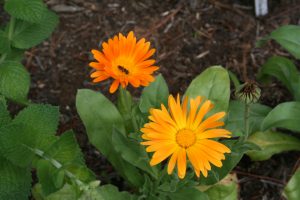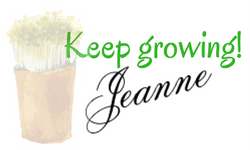I spent time this past weekend completing my seed inventory. What is a seed inventory? If you’ve been gardening for a while, you tend to collect a lot of half-full seed packages. Although my garden is big, I don’t use all the seeds that I buy each season. Instead, I save them for the next year.
The problem? I usually forget what I have, buy too much of what I don’t need, and find myself scrambling to locate specific varieties when the season is already underway and local garden centers are sold out.
Taking a Seed Inventory
A seed inventory is simply a count of what you have on hand and a list of what you need. I take my seed inventory by first mapping out what I plan to plant in the vegetable garden. Here is my list for 2017:
Spring
- Lettuce – red leaf, mixes
- Swiss Chard – rainbow mix “Bright Lights”
- Broccoli Rabe
- Radishes
- Peas – Lincoln, our favorite variety
- Beets – Detroit Dark Red
- Onions – sweet
- Carrots – Scarlet Nantes and Nantes Half-Long
- Parsnips
Late Spring – Summer
- Tomatoes – Beefsteak, Early Girl, Roma/Plum types, Sweet 100s (cherry).
- Peppers – just four plants this year since we always have too many.
- Green Beans – Blue Lake (our favorite variety, a bush type).
- Sweet Potatoes – slips (starter plants) for “Beauregard”
- Zucchini, squash
- Cucumbers
Fall
- Broccoli
- Cabbage
- Cauliflower
- Lettuce
- Garlic – Elephant type
Herbs
We have many herb plants but need more. This is a list of what I plan to grow, including some we already have.
- Sage
- Rosemary
- Sweet Basil
- Holy Basil (tulsi)
- Cinnamon Basil
- Parsley
- Applemint
- Mint
- Spearmint
- Clary Sage
- Thyme
- Lemon Balm
- Chives
- Stevia
- Catnip
- Lavender
- Oregano
- Dill
- Calendula
On the list of herbs, above, I have all except for the basils, dill, and parsley. I do need more lemon balm, however, since the plants I have seem to be struggling.
Fruit
We already have an extensive orchard of apple, pear, plum, peach, nectarine, apricot, and cherry trees. Only the apples, peaches, and pears have produced fruit so far. I also have a raised garden bed filled with strawberries, which I make into jam.
I still have my heart set on a fig tree if I can convince my husband that there are varieties that do not need coddling. I also want to try my hand at growing blueberries in containers on the back deck, as well as adding an elderberry plant on the forest edge for medicinal foods.
Now that I’ve listed everything I want to grow, I compare the seeds in my stash with what I plan to grow. I found that I have everything except carrots, dill, parsley, basil, lemon balm, and sweet potatoes. Some of the plants, such as the tomatoes, I will buy at the garden center. They can grow stronger, healthier starter plants than I can in my cool basement seed starting area.
By creating this list and being thoughtful and careful in my planning, I’ll be sure to have exactly what I need on hand to start my garden in a few short weeks – six, to be exact! I can start weeding in March, and plant the first lettuce, peas and radishes around St. Patrick’s Day if the weather cooperates.
Another great reason for making a seed inventory and planning a garden is that you can make sure you have space for everything. As I map out the garden beds, it’s important to me to rotate where I plant my vegetables to outwit the bugs and diseases. I’ll also need to erect the pea trellis to support my peas and get frames ready for row covers to keep the bugs off the squash plants.
Now is the time to do your garden planning – and dreaming. Have fun. This is the kind of “work” you can do at the kitchen table with a cup of coffee or tea at hand and a fun way to start your garden year.








Some of the new varieties of blueberries coming from Florida have less than 100 chill hours and can be grown in a greenhouse to produce two crops in a year.